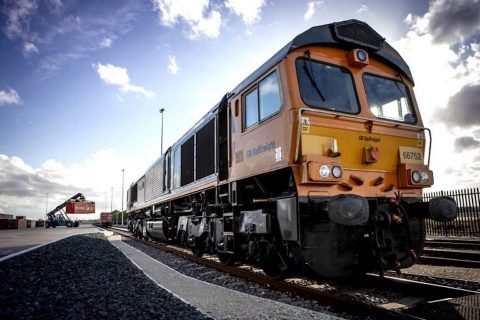Belgium and Luxembourg aim to double shared rail freight volumes

Belgium and Luxemburg have set out in a joint attempt to improve cross-border links between the two countries. The two partners aim to facilitate connections even more by carrying out joint infrastructure investments and doubling their cross-border rail freight volumes by 2040. Can the intended investments serve this cause?
The Benelux, e.g. the Netherlands, Belgium and Luxembourg, have a shared and long-standing heritage of entrepreneurship, trade and shipping. The region is home to some of Europe’s largest and most competitive ports. At the same time, it is also home to an integrated railway network and important rail freight terminals like CFL’s multimodal terminal in Bettembourg, Luxembourg.
Several freight trains cross the three countries’ borders daily, bringing logistics hubs closer and international supply chains to the consumer’s doorstep. For Belgium and Luxembourg, this is an everyday reality: the two countries already share large amounts of rail-borne volumes both in terms of goods transport and commuter services.
This intense interaction led the mobility ministers of the two countries, Georges Gilkinet from Belgium and François Bausch from Luxembourg, to sign a joint letter of intent to strengthen their railway cooperation. In doing so, they pledged to make joint investments in railway infrastructure and double everything by 2040: 2x more rail freight volumes and 2x more passengers on trains.
Shared investments
The two parties have concrete plans on how to enhance their cooperation. The first step will be targeted infrastructure investments. Among the priorities is the modernisation of the Axis 3 line connecting Luxembourg and Gembloux in Belgium and the lines between Brussels and Ottignies in Belgium. These lines are the main railway axes on which rail traffic is carried out between the two countries and Luxembourg’s gateway to Belgian ports like Antwerp-Bruges and the North Sea Port (Ghent and Terneuzen).
The two countries have already allocated a budget for these investments; however, as the two ministers underlined they will also jointly pursue the possibility of EU funding through CEF. The official proposal for these investments is expected to be submitted by the end of the year. Additionally, on the side of Luxemburg, infrastructure upgrades will mainly focus on reducing level crossings so that traffic becomes more efficient.
Boosting rail freight
As far as rail freight is concerned, the pledge is to double its cross-border volumes until 2040. Understandably, such a pledge can be quite broad because the joint letter of intent did not present any concrete solutions to achieve the objective other than infrastructure investments.
The fact that critical railway lines between the two countries will be modernised will probably result in increased capacity. However, it should be remembered that this capacity will not concern only rail freight. Since passenger traffic is also set to double within the same timeframe, the extra capacity generated from the investments will be, at best, split between passenger and cargo services, resulting in something less than doubled rail freight volumes.
Something else to consider is the need for integrated investments. That being said, if rail freight volumes between Luxembourg and Belgium indeed double by 2040, they should be accompanied by relevant investments, for instance, in terminal infrastructure, to keep up with the increased demand.
Also read:




